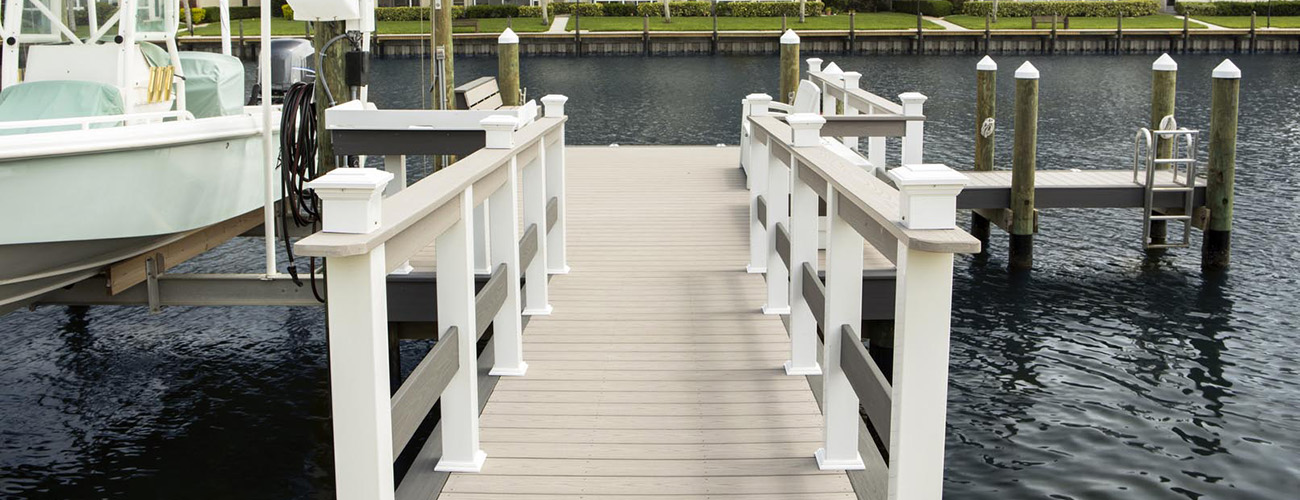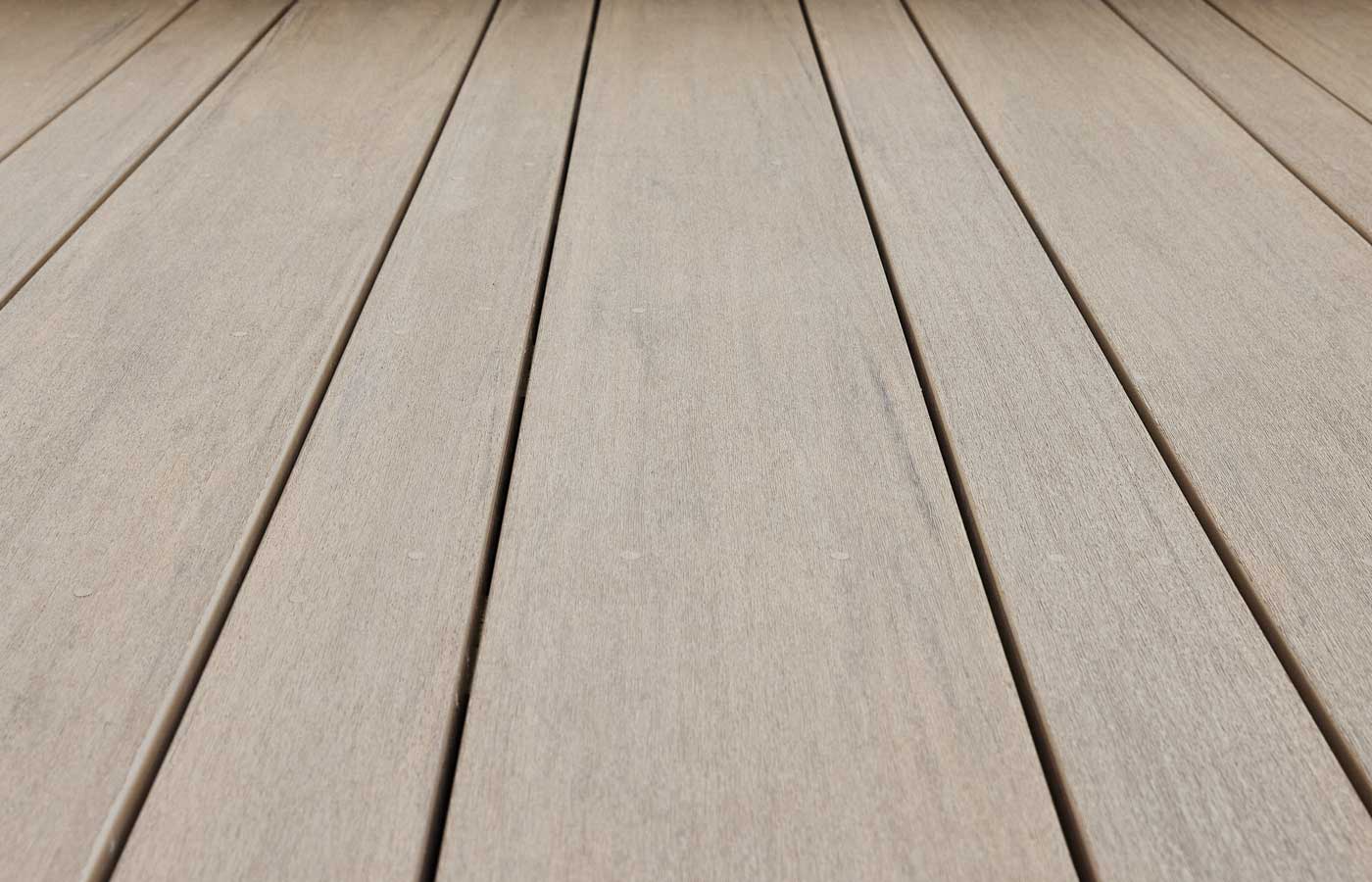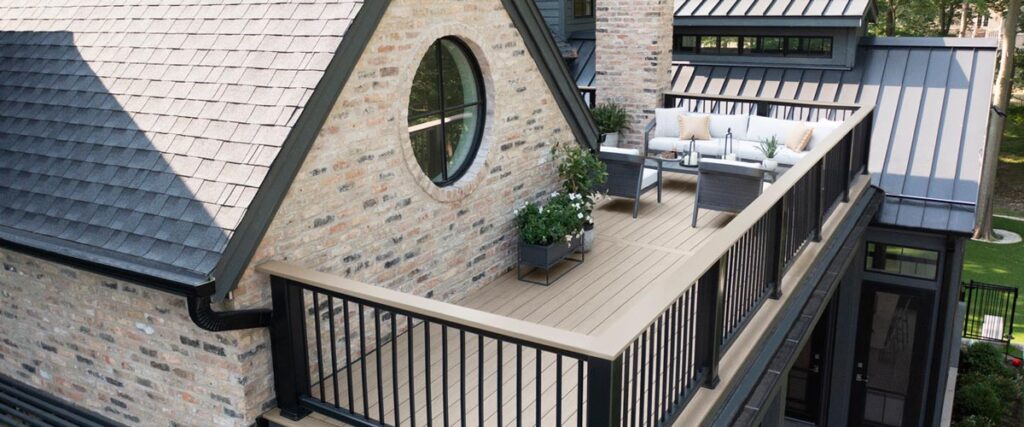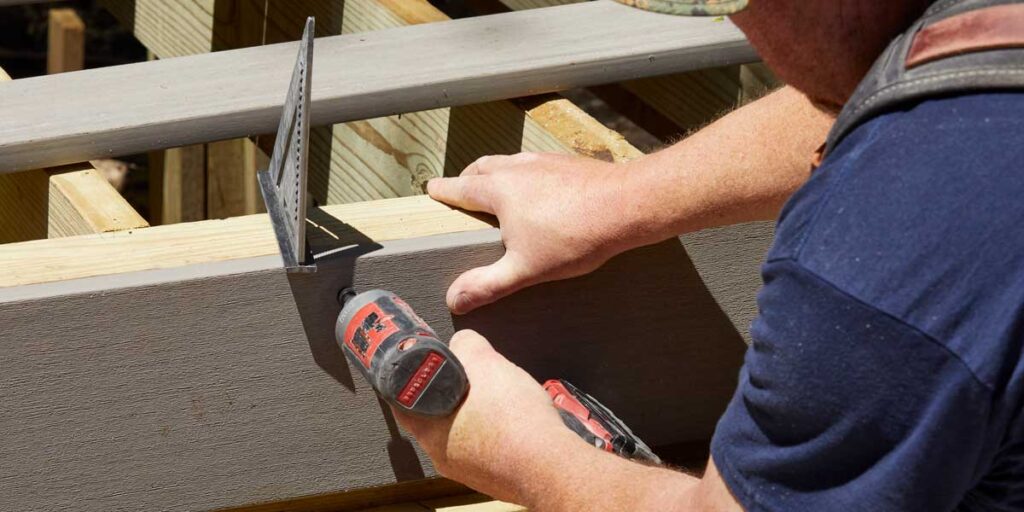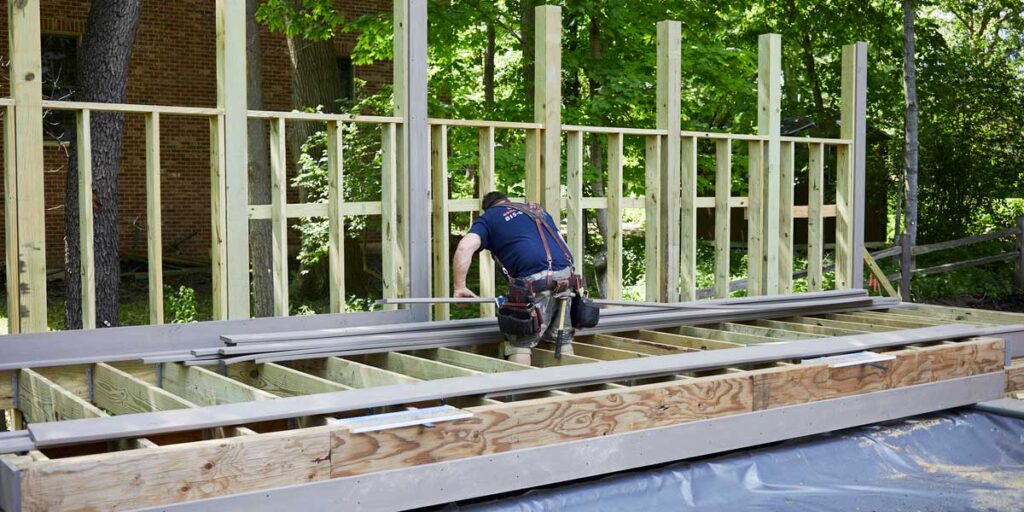You might think all deck boards are alike — but in reality, there are important distinctions to think about. Deck board thickness is one such distinction, and it can vary across composite decking products and different kinds of traditional wood decking.
There are four major reasons why the thickness of your deck boards will matter.
Why Deck Board Thickness Matters
- Material performance: Weaker wood will need to be cut thicker to support the structure.
- How far apart your deck joist spacing will be.
- Type of build: Residential or commercial.
- Deck surface elevation.
Not sure how to pick the right deck board thickness for your project? Or, need to know about not only thickness, but board width as well? Keep reading — and don’t worry, we won’t lay it on thick.
Deck Board Thickness: The ‘What’ & The ‘So What?’
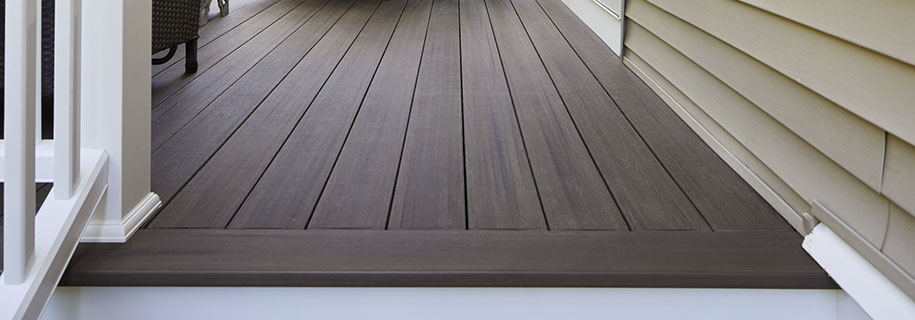
What size are deck boards, and why does it matter? To begin, it’s important to note the difference between standard deck board thickness and the heftier alternative.
DECK BOARD THICKNESS
Standard = Approximately 1” thick
Thicker boards = Approximately 1.5” thick
NOTE: Standard boards are often called a 5/4 board when referring to traditional lumber, which means the actual thickness is typically somewhere between 1” and 1 ¼”. Thicker boards are often called a 2 x 6 when referring to traditional lumber, which means the actual thickness is somewhere between 1.2” and 1.5”.
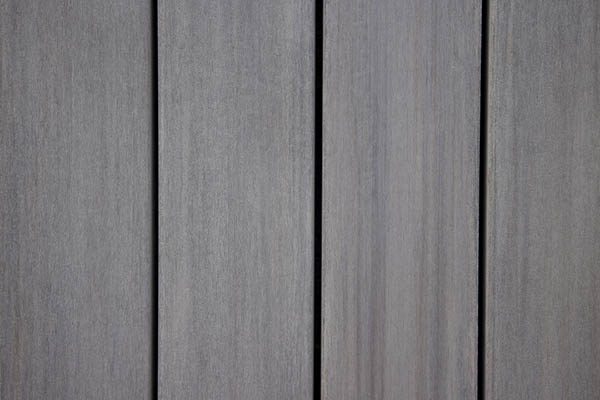
Thicker deck boards, like TimberTech Advanced PVC MAX boards (1.5” thick) can give you a sturdier underfoot feel.
These types of boards are sometimes required depending on the application (residential or commercial) they’re used for.
Factors That Can Influence Deck Board Thickness
- Material strength: Weaker wood will need to be cut thicker to support the structure.
- How far apart your deck joist spacing will be.
- Type of build: Deck board thickness can vary depending on whether you build a residential or commercial structure.
- Deck surface elevation: When replacing a few deck boards or a section, it’s important to use boards with the same thickness as your existing boards to avoid trip hazards on the deck surface.
Take a closer look at each one to get a better idea of what size boards for deck floor, dock, or boardwalk projects you may need.
1.) Deck Board Thickness by Material
When it comes to traditional wood decking, the species (or type) of wood you build with impacts the overall performance and longevity of your deck. Why? Because different types of wood are stronger — or weaker — than others. Certain tropical hardwoods, like Ipe, for example, are hardier than common pressure-treated woods like cedar or pine.
So what size are deck boards made of different types of wood? The standard thickness for all types of wood is 1”, however, for weaker woods, choosing a thicker board can give you a sturdier feel.
But if you prefer to go with more durable non-wood decking, your best option is TimberTech Advanced PVC MAX capped polymer deck boards.
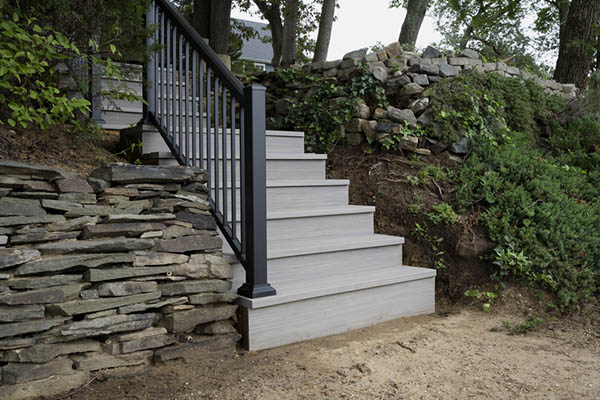
TimberTech® Advanced PVC MAX Decking
✓ 1.5” thick decking
✓ Made with the same innovative materials technology as our standard TimberTech Advanced PVC line
✓ Fully engineered polymers from core to cap.
✓ No organic material
✓ Unrivaled durability
TimberTech Advanced PVC MAX boards are an appealing non-wood decking option. They can span the widest joist spacing (more on this below) and are often used for boardwalks or docks.
THE TAKEAWAY
Greater deck board thickness impacts the build of your deck.
2.) Deck Board Thickness by Joist Spacing
Deck joist spacing plays a big role in determining what size boards for deck floor projects you need. If you’re installing TimberTech Advanced PVC decking and your project features spacing that’s greater than the conventional 16” between the center of your deck joists, you’ll need to opt for thicker deck boards.
Thicker deck boards allow for more space between your deck joists — which means you’ll likely need fewer joists for your build. Fewer joists can mean less labor and lower upfront material costs.
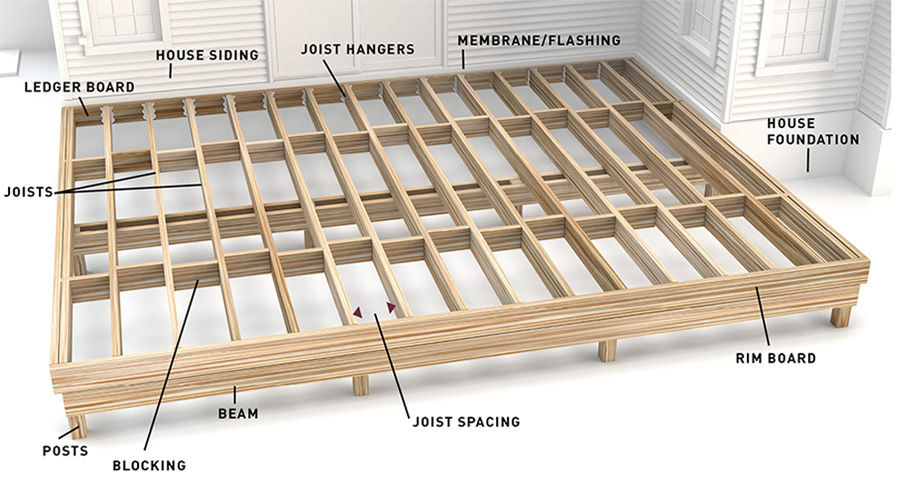
What Are Deck Joists?
Deck joists are the heart of your deck’s substructure. They support your deck boards, which fasten onto the joists from above. The greater the space between the joists, the stronger your deck boards need to be.
What Is “On Center” for Deck Joist Spacing?
Your deck surface is made up of deck boards fastened to your joists at regular intervals, measured from the center of a given joist to the center of the adjacent joist. That measurement is called “on center.”
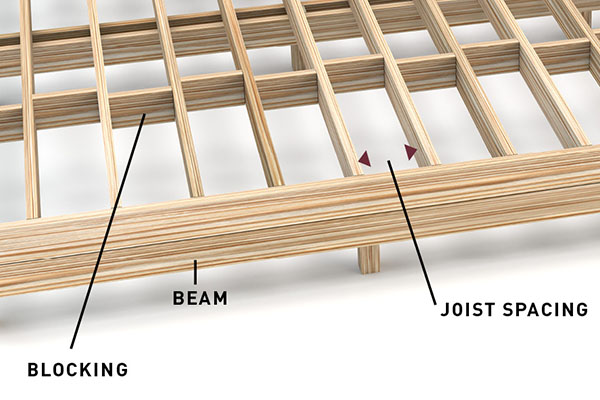
Standard Deck Joist Spacing
The standard for deck joist spacing will depend on the application:
- 16” on center = Standard for residential decking applications. 12” on center is recommended for a sturdier underfoot feel, when using standard deck board thickness of 1”.
- 24” on center = Sometimes used for commercial applications such as docks and boardwalks; wider joist spacing requires greater deck board thickness.
With wider deck joist spacing thanks to thicker deck boards, you can potentially save both upfront costs and labor on your deck build.
THE TAKEAWAY
More joists mean greater material costs and more labor.
3.) Deck Board Thickness: Residential vs Commercial
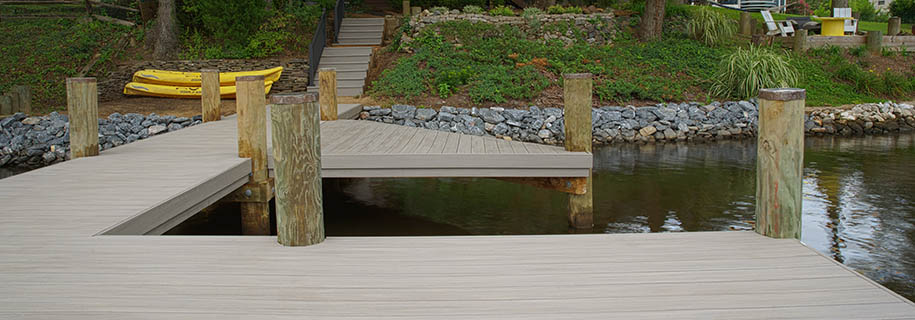
What size are deck boards for residential (like a composite deck in your backyard) vs commercial (like a dock, boardwalk, or a similarly high-traffic area) builds? It depends on the different building codes between the two.
When considering what size boards for deck floor joist spacing you’ll need for your build, it’s important to consider the deck board’s span rating. Span rating refers to the maximum spacing a board can span without a support.
Maximum joist spacing for standard TimberTech composite deck boards is 16″ on center for residential applications. TimberTech Advanced PVC MAX boards can span 24″ on center, making them ideal for docks and boardwalks.
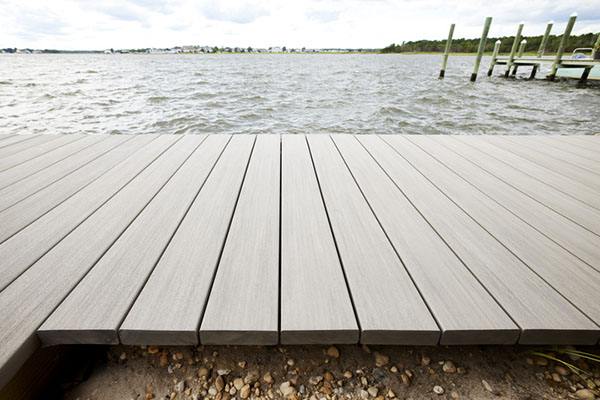
Get the MAX Benefit
Unlike traditional wood, TimberTech Advanced PVC MAX boards:
✓ Boast the thickness for less movement and serious durability.
✓ Provide a sturdy underfoot feel.
✓ Stay incredibly resistant to moisture and protect against mold, mildew, and rot thanks to their innovative capped polymer construction.
As always, when installing any decking products, you should closely review the appropriate decking installation guides and local building codes. Working with a TimberTech-registered contractor is always recommended.
THE TAKEAWAY
Greater deck board thickness means a sturdy feel underfoot, less board movement, and the right heft to perform in coastal conditions.
4.) Deck Board Thickness: Deck Surface Elevation
What size boards for deck floor replacement you choose can affect your deck surface elevation if you’re only replacing a few boards or a section of your deck. If the thickness of your replacement boards is not the same as the existing boards, you’ll create an uneven surface, which could potentially be dangerous tripping hazard.
The easiest way to avoid an uneven surface is to replace any damaged boards with the same material and dimensions as the existing boards.
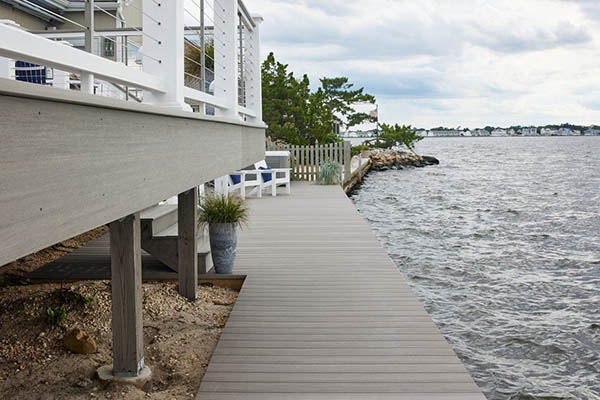
Ensure a Flat Surface With Different Materials
If you plan on upgrading your traditional wood surface in phases to a more durable engineered decking option, you can find similar board dimensions across wood and non-wood materials.
For instance, TimberTech Advanced PVC MAX boards are the same thickness (1.5”) as traditional wood 2 x 6 boards, giving you a clean, flat surface between the old and new sections.
THE TAKEAWAY
TimberTech Advanced PVC MAX deck boards boast the same thickness as many traditional wood 2 x 6 (1.5”) boards, meaning they can be used to replace 2 x 6s without causing a trip hazard.
Explore Your TimberTech Advanced PVC MAX Board Options
Answering what size boards for deck floor or dock projects you’ll need isn’t the only question — you’ll also have to decide on aesthetics.
Our TimberTech Advanced PVC MAX decking isn’t just designed for optimal performance; it’s designed to look good, too. Choose from our two contemporary gray options with subtle nuances of color and natural-looking grain patterns that give each its own real-wood aesthetic.
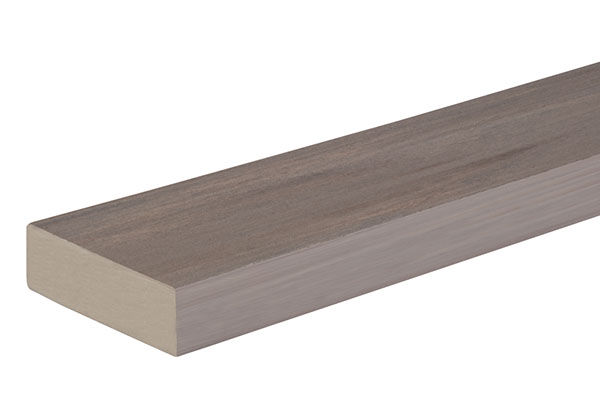
Coastline®
From the TimberTech Advanced PVC Vintage Collection®
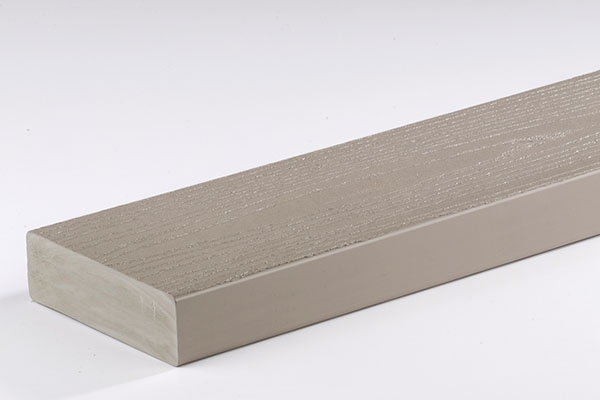
Slate Gray
From the TimberTech Advanced PVC Harvest Collection®
Also Interested in Deck Board Width?
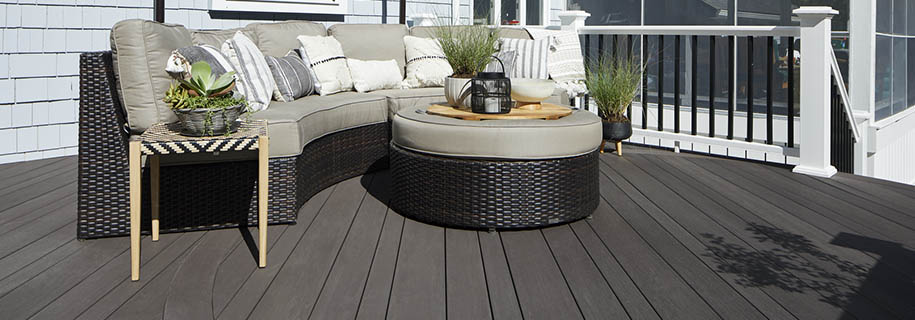
When you think “deck board thickness,” or ask yourself “what size are deck boards?”, you may also be curious about the width of the boards.
The TimberTech Advanced PVC Vintage Collection features innovative Multiwidth Decking, which offers boards in narrow (3.5”), standard (5.5”), and wide (7.25”) widths.
Choosing your deck board width is mostly an aesthetic choice. The deck board thickness of all TimberTech Multi-Width Decking is 1”, making these boards ideal for builds with standard 16” joist spacing (but unsuitable for commercial applications with 24” spacing).
Why Choose Multi-Width Decking?
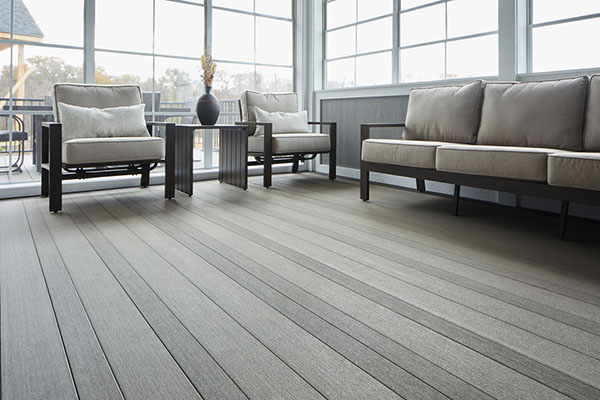
Add Visual Interest to Your Deck Design
Multi-width boards can give your deck a unique look — without straying from the conventional deck joist spacing of 16” on center.
Choose narrow boards for a traditional hardwood flooring look, or wide boards for a more contemporary feel. For a truly dynamic effect, mix and match all three widths in a repeating pattern of narrow, standard, and wide boards.
Get Creative With Deck Patterns
You can use Multi-Width Decking (either a single width or mixed) to create a variety of deck board patterns such as diagonal decking, a herringbone design, a tile pattern, and more.*
Repeat the pattern across the whole of your deck for a striking display, or inlay patterns into a section of your deck to create dynamic focal points.
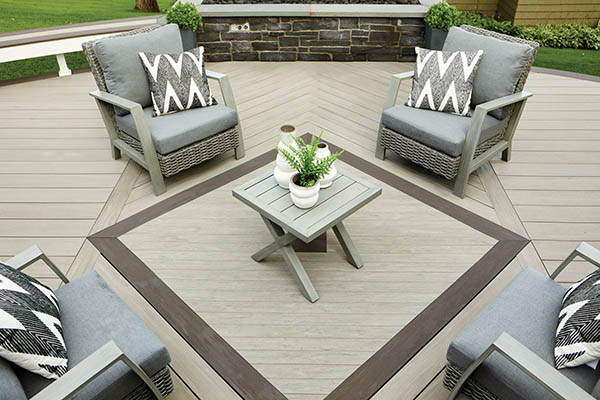
*NOTE: Deck board patterns require specific joist spacing and blocking, so it is recommended you work with a TimberTech-registered contractor for your patterned deck design.
Deck Board Thickness: See & Feel It for Yourself
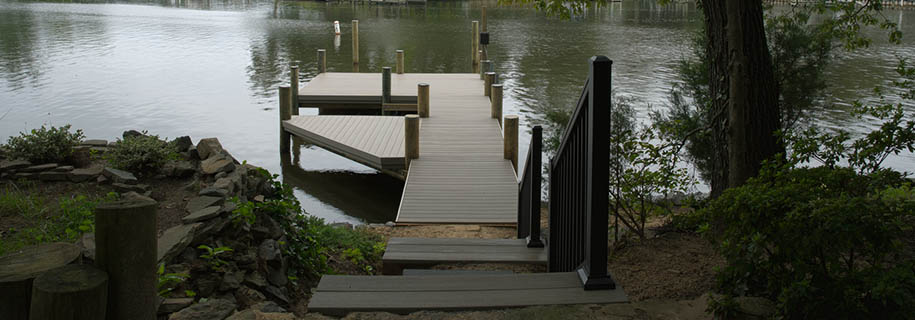
Now that you’ve answered, “what size are deck boards?” and have a better understanding of deck board thickness — and width — you’re ready to start exploring all your decking options.
See and feel the strength and beauty of TimberTech decking yourself by ordering up to four free samples to help you choose the right deck board size and color for your deck, dock, or boardwalk.

